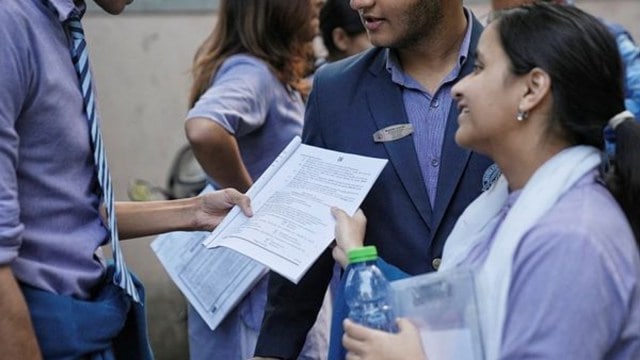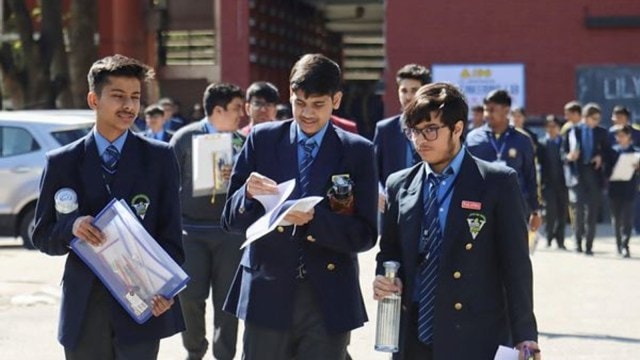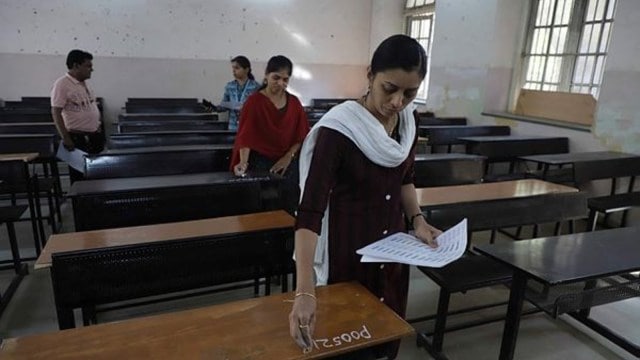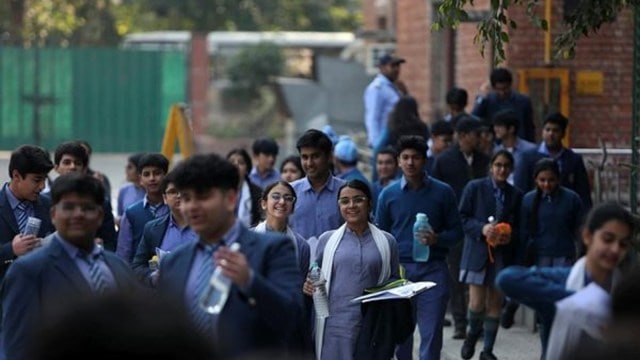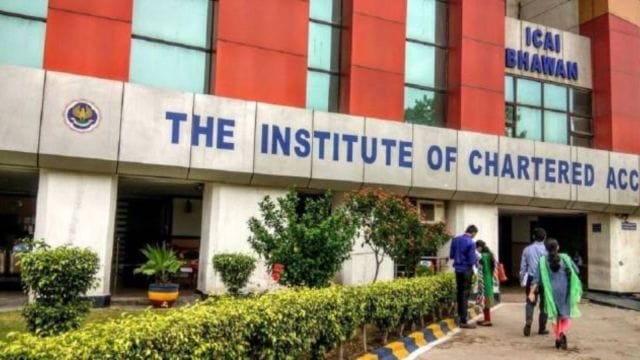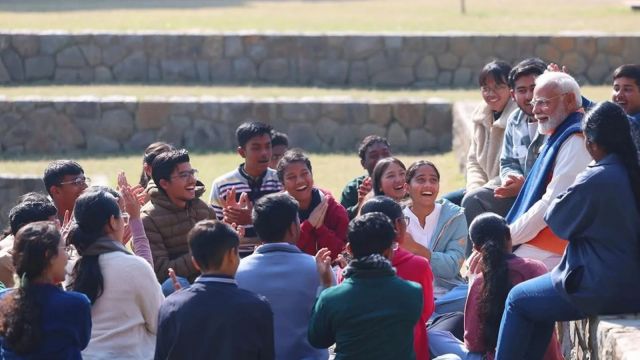
UPSC Key: International Criminal Court, Foreign Corrupt Practices Act and Waving a black flagSubscriber Only
Important topics and their relevance in UPSC CSE exam for November 22, 2024. If you missed the November 21, 2024 UPSC CSE exam key from the Indian Express, read it here
THE WORLD
Russia fired ICBM after being hit with US missiles: Kyiv
Syllabus:
Preliminary Examination: Current events of national and international importance.
Mains Examination: General Studies II: Effect of policies and politics of developed and developing countries on India’s interests
What’s the ongoing story: After Russia fired a hypersonic intermediate-range ballistic missile at Dnipro in Ukraine on Thursday, Russian President Vladimir Putin said that more could follow and added civilians would be warned ahead of such strikes.
Key Points to Ponder:
• What is an intercontinental ballistic missile (ICBM), and how does it differ from other missile types?
• How does the “Oreshnik” missile’s hypersonic capability impact its effectiveness and the challenges it poses to missile defense systems?
• Intermediate-range ballistic missile (IRBM) and Intercontinental ballistic missile (ICBM)-Compare and contrast
• What would be the implications of Russia using an ICBM against Ukraine, considering the weapon’s strategic nature?
• What has been the international community’s response to any threats or indications of Russia considering ICBM deployment?
• How likely is the use of an ICBM to provoke a NATO or broader international military response?
• Would the use of an ICBM in the Ukraine conflict signify a breakdown of global nuclear deterrence principles?
• What role does public perception and propaganda play in the strategic discourse surrounding Russia’s potential use of ICBMs?
• “The Russia-Ukraine war: A litmus test for global governance and international law.” Discuss.
Key Takeaways:
• On November 21, 2024, Russia escalated its military actions in Ukraine by launching an experimental hypersonic intermediate-range ballistic missile, named “Oreshnik,” targeting the city of Dnipro.
• President Vladimir Putin stated that this strike was a direct response to the U.S. and UK permitting Ukraine to utilize advanced Western weaponry to attack Russian territory. —He warned of potential future missile launches and emphasized the global implications of the conflict.
• The United States was pre-notified of the launch and subsequently informed its allies, including Kyiv. —While Ukraine claimed that an intercontinental ballistic missile (ICBM) was used, U.S. officials identified the weapon as an intermediate-range ballistic missile (IRBM). —The missile, launched from Astrakhan, targeted a military facility in Dnipro and was notable for its Multiple Independently Targetable Re-entry Vehicle (MIRV) payload, typically associated with nuclear-capable missiles.
• In addition to the “Oreshnik” missile, Russia deployed a Kinzhal hypersonic missile and several cruise missiles during the attack.
• The strikes damaged enterprises and critical infrastructure in Dnipro, resulting in injuries. This action followed Ukraine’s use of U.S. and UK missiles to strike targets within Russia, marking a significant escalation in the conflict.
• The developments have raised concerns about the potential impact on future peace negotiations, especially with the incoming U.S. administration under President-elect Donald Trump
Do You Know:
• Intercontinental Ballistic Missiles (ICBMs) and Intermediate-Range Ballistic Missiles (IRBMs) are pivotal components of a nation’s strategic defense capabilities. ICBMs are designed to deliver nuclear or conventional warheads over distances exceeding 5,500 kilometres, enabling them to strike targets across continents. In contrast, IRBMs have ranges between 3,000 and 5,500 kilometres, making them suitable for regional deterrence and theatre-level operations.
• India has made significant advancements in developing these missile systems. The Agni series, developed by the Defence Research and Development Organisation (DRDO), exemplifies this progress. The Agni-V, for instance, is an ICBM with a range of over 5,000 kilometres, capable of reaching targets across Asia and parts of Europe. It is a three-stage, road-mobile, canisterized, and solid-fuelled ballistic missile, representing a significant leap in India’s strategic capabilities.
Other Important Articles Covering the same topic:
????Ukraine urges swift global reaction to Russia’s use of ‘new weapon’
Practice question for UPSC Prelims Covering a similar theme 1. Which missile has Russia recently tested in the Ukraine conflict? (a) RS-28 Sarmat (b) Oreshnik (c) Zircon (d) Avangard
ICC issues arrest warrants for Netanyahu, former Israel defence chief, Hamas leader
Syllabus:
Preliminary Examination: Current events of national and international importance.
Mains Examination: General Studies II: Important International institutions, agencies and fora- their structure and mandate
What’s the ongoing story: The International Criminal Court has issued arrest warrants for Israeli Prime Minister Benjamin Netanyahu, his former defence minister, and a Hamas leader, Ibrahim Al-Masri, also known as Mohammed Deif, for alleged war crimes and crimes against humanity, the court announced on Thursday.
Key Points to Ponder:
• What is Rome Statute?
• Discuss the jurisdiction and mandate of the International Criminal Court (ICC).
• Examine the role of the ICC in addressing alleged war crimes and crimes against humanity in conflict zones. How effective has the ICC been in fulfilling its mandate?
• Analyse the implications of the ICC issuing arrest warrants for sitting heads of state or government officials. What challenges does this pose to international diplomacy and justice?
• Critically assess the reasons why certain countries, including major powers, have chosen not to become members of the ICC. What impact does this have on the court’s global legitimacy and enforcement capabilities?
• Evaluate the potential consequences of the ICC’s arrest warrants on the Israel-Palestine conflict. How might this development influence future peace negotiations and the broader Middle East geopolitical landscape?
Key Takeaways:
• The International Criminal Court (ICC) has issued arrest warrants for Israeli Prime Minister Benjamin Netanyahu, former Defense Minister Yoav Gallant, and Hamas military commander Mohammed Deif, alleging their involvement in war crimes and crimes against humanity during the Israel–Hamas conflict.
• The charges against Netanyahu and Gallant include the use of starvation as a method of warfare, murder, persecution, and other inhumane acts. Deif is accused of orchestrating mass killings, hostage-taking, and rape during the October 7 attacks on Israel.
• Israel, which does not recognize the ICC’s jurisdiction, has condemned the warrants, with Netanyahu labeling them as “false and unjust.” The United States, also not a member of the ICC, has criticized the court’s decision, expressing concerns over its implications for international relations.
• The warrants obligate the 124 ICC member states to arrest the individuals if they enter their territories, potentially restricting their international travel. However, enforcement remains uncertain, as the ICC lacks its own police force and relies on member states for execution.
Do You Know:
• The ICC, headquartered in The Hague, Netherlands, was established under a 1998 treaty called the “Rome Statute”. —It “investigates and, where warranted, tries individuals charged with the gravest crimes of concern to the international community: genocide, war crimes, crimes against humanity and the crime of aggression.” —At present, 124 countries are party to the Rome Statute, including Britain, Japan, Afghanistan, and Germany. India is not a member, nor are China and the US.
• The ICC was established to prosecute the most heinous offences only when a country’s own legal machinery was unable or unwilling to act. Unlike the International Court of Justice (ICJ), which deals with countries and inter-state disputes, the ICC prosecutes individuals. —Additionally, the offences should be committed either in a country that ratified the agreement or by a national of a ratifying country. —The ICC can also practise its jurisdiction over cases referred by the UN Security Council to it.
• Israel is not party to the Rome Statute, but Palestine is.
• Back in 2018, Palestine had referred the situation in the country as a whole to the ICC. Then in November 2023, South Africa, Bangladesh, Bolivia, Comoros, and Djibouti sent a further referral into the Palestine situation. —In January 2024, “the Republic of Chile and the United Mexican State additionally submitted a referral to the Prosecutor with respect to the situation in The State of Palestine,” the ICC said.
• The ICC’s decisions are binding, but it depends on its members to ensure cooperation. Thus, if Netanyahu or Gallant were to travel to any of the 124 member states, its government would be obligated to arrest them and extradite them to The Hague.
Other Important Articles Covering the same topic:
????Arrest warrant against Vladimir Putin: What powers does the ICC have against the Russian president
Practice question for UPSC Prelims Covering a similar theme: 2. Which of the following crimes fall under the jurisdiction of the ICC? (a) Genocide (b) War crimes (c) Crimes against humanity (d) All of the above
FRONT PAGE
US Govt indicts Gautam Adani, alleges Rs 2,000-cr bribes to ‘Indian officials’
Syllabus:
Preliminary Examination: Current events of national and international importance.
Mains Examination: General Studies IV: Corporate Governance, challenges of corruption.
What’s the ongoing story: US prosecutors in New York indicted Adani Group Chairman Gautam S Adani, his nephew Sagar Adani and six others on Wednesday for allegedly offering Rs 2,029 crore (US $265 million) in bribes to Indian government officials for securing “lucrative solar energy supply contracts” with state electricity distribution companies.
Key Points to Ponder:
• What is the case here?
• Why are US authorities taking such keen interest and action in an alleged bribery scheme thousands of miles away in India?
• Discuss the implications of the United States Department of Justice charging foreign nationals, such as Gautam Adani, with financial crimes.
• Analyse the role of the Foreign Corrupt Practices Act (FCPA) in curbing international bribery and corruption. How effective has the FCPA been in prosecuting foreign entities and individuals?
• Examine the potential consequences of the US charges against Gautam Adani on India-US economic relations. How might such legal actions influence bilateral trade and investment? Key Takeaways:
• The United States Department of Justice has indicted Adani Group Chairman Gautam S Adani, his nephew Sagar Adani and six others on charges of defrauding investors and concealing a bribery scheme.
• The indictment alleges that between 2020 and 2024, the Adani Group paid over $250 million in bribes to Indian government officials to secure favourable contracts for solar energy projects, which were projected to generate profits exceeding $2 billion.
• The defendants are accused of misleading U.S. investors by concealing these illicit payments while raising more than $3 billion through loans and bond offerings.
• In response to the indictment, Kenya’s President William Ruto announced the cancellation of multimillion-dollar airport expansion and energy deals with the Adani Group. These agreements included plans to modernize Nairobi’s main airport and construct power transmission lines.
• The decision was made based on new information from investigative agencies and partner nations, following the U.S. charges against Adani.
• The Adani Group has denied the allegations, stating that they are baseless and that the company operates in compliance with all laws and regulations.
• The indictment has raised concerns about the potential impact on U.S.-India relations and the broader implications for international business practices Do You Know:
• Apart from Gautam Adani and Sagar Adani the other defendants named are: i) Vneet Jaain, CEO of Adani Green Energy Ltd, ii) Ranjit Gupta, CEO of Azure Power Global Ltd between 2019 and 2022, iii) Rupesh Agarwal, who worked with Azure Power between 2022 and 2023; iv, v, vi) Cyril Cabanes, a citizen of Australia and France, and Saurabh Agarwal and Deepak Malhotra, all three of whom worked with a Canadian institutional investor.
• According to the US prosecutors, the “Indian Energy Company” and a “US Issuer” won awards to supply 8 gigawatts and 4 gigawatts of solar power at a fixed rate to state-owned Solar Energy Corporation of India (SCI).
• SECI was supposed to sell the power to state electricity companies. But since SECI could not find buyers, it could not enter into corresponding power purchase agreements with Adani Group and Azure Power.
• It was after this that the defendants came up with a plan to bribe state government officials in India to buy the power from SECI.
• A press release by the Attorney’s Office of the Eastern District of New York says, “…between approximately 2020 and 2024, the defendants agreed to pay more than $250 million in bribes to Indian government officials to obtain lucrative solar energy supply contracts with the Indian government, which were projected to generate more than $2 billion in profits after tax over an approximately 20-year period (the Bribery Scheme).
• On several occasions, Gautam S Adani personally met with an Indian government official to advance the Bribery Scheme…” The US Securities and Exchange Commission also charged Gautam Adani, Sagar Adani, and Cabanes.
• An indictment in the US is basically a formal written accusation originating with a prosecutor and issued by a grand jury against a party charged with a crime.
• When a person is indicted, they are given formal notice that they are believed to have committed a crime. The can then hire an defence lawyer and take steps to defend themselves.
Other Important Articles Covering the same topic:
????At centre of Gautam Adani’s indictment in the US, the world’s ‘largest’ solar deal
????AMONG OFFICIALS OF FBI AND SEC, SEVERAL INDIAN AMERICANS
????Why US is taking action in an alleged bribery ‘scam’ in India
Practice question for UPSC Prelims Covering a similar theme: 3. The term ‘securities fraud’ refers to: (a) Illegal activities involving financial instruments (b) Unauthorized border crossings (c) Breaches in national security (d) Counterfeiting of currency
GOVT & POLITICS
Waving black flag not illegal or defamatory, says Kerala HC
Syllabus:
Preliminary Examination: Indian Polity and Governance-Constitution, Political System, Panchayati Raj, Public Policy, Rights Issues, etc.
Mains Examination: General Studies II: Indian Constitution—historical underpinnings, evolution, features, amendments, significant provisions and basic structure.
What’s the ongoing story: Observing that showing a black flag to a person is not an illegal act and does not amount to defamation, the Kerala High Court has quashed a case registered against three persons in connection with waving a black flag at the convoy of Chief Minister Pinarayi Vijayan.
Key Points to Ponder:
• What is ‘defamation’?
• Which Article of the Indian Constitution guarantees the right to freedom of speech and expression?
• The act of waving a black flag in India is commonly associated with what?
• Discuss the significance of the Kerala High Court’s ruling that waving a black flag does not constitute an illegal act or defamation. How does this judgment reinforce the right to peaceful protest in India?
• Analyze the balance between the right to freedom of speech and expression and the maintenance of public order in India. How do judicial interpretations influence this balance?
• Examine the legal provisions related to defamation in India. How do these laws interact with the fundamental rights guaranteed under the Constitution?
Key Takeaways:
• In the incident that took place in 2017, the three young men from Paravur in Ernakulam district were accused of waving a black flag at the convoy of Vijayan with an intention to defame him, and when police tried to restrain them from proceeding towards the convoy, they allegedly used criminal force by pushing police personnel.
• The Kerala High Court has ruled that waving black flags as a form of protest is not illegal and does not constitute defamation. This decision came as the court quashed a case against individuals who had shown black flags to Chief Minister Pinarayi Vijayan’s convoy.
• The court emphasized that such actions are a legitimate expression of dissent and are protected under the right to freedom of speech and expression. This ruling reinforces the importance of upholding democratic rights and the freedom to protest peacefully.
Do You Know:
• Waving black flags in India is a symbolic act of protest or dissent. This practice has historical, political, and social connotations, often used to demonstrate opposition or displeasure against government policies, political leaders, or specific incidents.
• During India’s struggle for independence, black flags were occasionally used to oppose oppressive policies or laws enforced by British colonial rulers. Over the decades, black flag demonstrations have continued to be a significant part of political and social movements in India
• Protesters wave black flags to show discontent against visiting political leaders, controversial policies, or specific governmental actions. For example, black flags were waved during protests against farm laws, demonetization, and other major policy decisions.
• Waving black flags falls under the right to peaceful protest, which is protected by Article 19 of the Indian Constitution. At times, governments have sought to prevent such protests by imposing Section 144 (prohibitory orders) or detaining protesters pre-emptively.
• Black as a colour is globally associated with mourning, disapproval, or resistance. In India, black flags signify a collective objection to certain policies or decisions. The act of waving black flags often unites diverse groups under a common cause, strengthening the impact of their message.
Other Important Articles Covering the same topic:
????Blackout in Kerala: Pinarayi Vijayan’s Left govt wages struggle against a colour
As deadline looms, nations, blocs reject draft negotiating text
Syllabus:
Preliminary Examination: General issues on Environmental ecology, Bio-diversity and Climate Change – that do not require subject specialization.
Mains Examination: General Studies II: Bilateral, regional and global groupings and agreements involving India and/or affecting India’s interests.
What’s the ongoing story: A day before the scheduled close of talks, the COP29 meeting in Azerbaijan’s Baku stared at a major crisis Thursday with almost every country and bloc rejecting the latest draft negotiating text, not just on finance — the main focus of this conference — but on every other negotiating track.
Key Points to Ponder:
• What is Global Stock Take (GST)?
• Analyze the challenges faced by COP29 in reaching a consensus on climate finance. What are the primary points of contention among developed and developing nations?
• What is the significance of the Global Stock Take (GST) under the Paris Agreement? Discuss its role in enhancing global climate action.
• Explain the methodology and key components of the Global Stock Take. How does it address the areas of mitigation, adaptation, and finance?
• Analyze the challenges and opportunities associated with implementing the findings of the Global Stock Take. How can countries ensure the process leads to tangible climate actions?
• The Global Stock Take highlights collective progress rather than individual contributions. Discuss the merits and demerits of this approach in achieving the goals of the Paris Agreement.
Key Takeaways:
• While differences over the finance agreement prompted most of the objections to the draft negotiating texts Thursday, particularly from the developing countries, major disagreements came to the fore on other issues as well, including mitigation and adaptation. But the biggest issue was regarding the right approach in which the decisions taken in the Global Stock Take (GST) in Dubai last year could be followed upon in this year’s agreement. This issue cropped up at the start of the conference as well, and delayed the adoption of the agenda for hours.
• Several countries, including India and Saudi Arabia, objected to references being made to one particular paragraph in GST which had asked all countries to transition away from fossil fuels, triple renewable energy by 2030, reduce emissions of non-CO2 gases including methane, and phase-down coal, among other things.
Do You Know:
• Global Stock Take is a five-year exercise mandated by the 2015 Paris Agreement to take stock of the progress being made in the fight against climate change, and suggest measures to make course corrections. The first of these exercises was held in Dubai last year.
• Regarding the one particular paragraph, India, for example, is opposed to making any methane emission cuts because it affects the agriculture sector. Saudi Arabia and other oil-producing countries have problems with the mention of a transition away from fossil fuels.
• India said it would not agree to a follow-up on GST outcomes. “As per the Paris Agreement, GST is supposed to only inform parties to undertake climate action,” Indian negotiator Leena Nandan said.
• Saudi Arabia said that the Arab Group of countries, which it leads, would not accept any text that targeted “any specific sector including fossil fuels”.
• Countries also saw this as an attempt to put the focus back on mitigation, since that particular paragraph in the GST agreement deals mainly with mitigation measures.
Other Important Articles Covering the same topic:
????Developed nations can get returns if they pay mitigation costs: Study
Why Andhra has scrapped 2-child rule for contesting local body polls
Syllabus:
Preliminary Examination: Economic and Social Development-Sustainable Development, Poverty, Inclusion, Demographics, Social Sector Initiatives, etc.
Mains Examination: General Studies I: Population and associated issues
What’s the ongoing story: Since returning to power, Andhra Pradesh Chief Minister N Chandrababu Naidu has expressed concern about the ageing population in the state and said his government was contemplating moves to incentivise families to have more children.
Key Points to Ponder:
• Why was the policy introduced?
• Which states adopted the recommendation?
• Why was the policy rescinded in some states?
• Why did Andhra Pradesh roll back the ‘two-child policy’?
• Is there a delimitation link and has Naidu found support?
• Examine the role of Total Fertility Rate (TFR) as an indicator of population growth. How does Andhra Pradesh’s current TFR compare to the national average, and what are the potential socio-economic consequences?
• Critically assess the impact of population control policies on the socio-economic development of Indian states. Should such policies be revisited in light of changing demographic trends?
Key Takeaways:
• Andhra Pradesh has repealed the two-child norm, which previously barred individuals with more than two children from contesting local body elections.
• The government aims to make the political process more inclusive, allowing a broader section of society to participate in grassroots governance. The move reflects the evolving demographic and societal conditions, particularly as the state’s Total Fertility Rate (TFR) has already fallen below replacement levels (2.1), meeting population stabilization goals. Similar two-child norms have been struck down in other states due to challenges concerning individual rights and fairness.
• The two-child policy was initially introduced to encourage population control by disqualifying candidates with larger families. However, its relevance has diminished as fertility rates have declined across India.
• Critics argued that the rule disproportionately affected marginalized groups and women, limiting their ability to engage in political leadership roles.
• By removing this barrier, the government may empower more women and underprivileged individuals to participate in elections. Andhra Pradesh joins several states that have scrapped similar restrictions, signalling a shift towards more progressive electoral policies.
Do You Know:
• The two-child policy in Andhra Pradesh was a legislative measure introduced in May 1994, which disqualified individuals with more than two children from contesting local body elections. This policy aimed to control population growth by restricting eligibility for positions in Gram Panchayats, Mandal Praja Parishads, and Zilla Parishads to those with two or fewer children
• on November 18, 2024, the Andhra Pradesh Legislative Assembly passed the AP Panchayat Raj (Amendment) Bill, 2024, and the AP Municipal Laws (Amendment) Bill, 2024, effectively repealing the two-child norm. This decision was influenced by the state’s declining fertility rates and changing socio-economic conditions. The Total Fertility Rate (TFR) in Andhra Pradesh had decreased to 1.7 children per woman, which is below the replacement level of 2.1.
• Chief Minister N. Chandrababu Naidu emphasized that the earlier focus on population control had been successful, but the current demographic trends necessitated a shift in policy. He advocated for incentivizing families to have more children to address potential economic challenges associated with an aging population.
Other Important Articles Covering the same topic:
????‘Have more children for the benefit of the nation’: Chandrababu Naidu plans legislation to boost young population in Andhra
THE EDITORIAL PAGE
Leaner, faster, fairer
Syllabus:
Preliminary Examination: Indian Polity and Governance-Constitution, Political System, Panchayati Raj, Public Policy, Rights Issues, etc.
Mains Examination: General Studies II: Structure, organization and functioning of the Executive and the Judiciary—Ministries and Departments of the Government; pressure groups and formal/informal associations and their role in the Polity.
What’s the ongoing story: Shailaja Chandra Writes: The appointment of a new Chief Justice of India offers an opportunity to address one of the country’s most intractable problems: The administrative bottlenecks choking the judicial system. Exactly one year ago, the Supreme Court’s Centre for Research and Planning (CRP) published a report, ‘State of the Judiciary’, in which the current Chief Justice of India (CJI) Sanjiv Khanna’s suggestions find a place.
Key Points to Ponder:
• Discuss the primary factors contributing to the backlog of cases in the Indian judiciary. How do these factors impede the delivery of timely justice?
• Analyse the potential benefits and challenges of involving the private sector in addressing the pendency of cases in Indian courts.
• Evaluate the impact of judicial delays on the socio-economic fabric of India. How do prolonged legal proceedings affect individuals and businesses?
• Examine the role of technological interventions in expediting judicial processes. What measures can be implemented to modernize the Indian judiciary?
• Critically assess the suggestion of outsourcing certain judicial functions to external agencies. What are the ethical and legal implications of such a move? Key Takeaways:
• Shailaja Chandra addresses the persistent inefficiencies within the Indian judiciary, characterized by extensive delays and a significant backlog of cases. She advocates for the judiciary to seek external assistance and adopt innovative solutions to enhance its efficiency. Key recommendations include: —Leveraging Technology: Implementing digital tools to streamline case management and court procedures. —Alternative Dispute Resolution (ADR): Promoting mechanisms like mediation and arbitration to alleviate the burden on courts. —Administrative Reforms: Overhauling existing administrative processes to reduce bureaucratic hurdles and expedite case handling. —Public-Private Partnerships: Collaborating with private entities to introduce best practices and resources into the judicial system.
Do You Know:
• The Supreme Court of India’s Centre for Research and Planning (CRP) released a comprehensive report titled “State of the Judiciary: A Report on Infrastructure, Budgeting, Human Resources, and ICT” in December 2023. This report provides an in-depth analysis of the current state of India’s judicial system, focusing on the High Courts and the district judiciary.
• There is a deficit of 4,250 courtrooms for the sanctioned strength of 25,081 judges in the district judiciary. States like Jammu & Kashmir and Ladakh have less than 40.78% of the required courtrooms, while Tripura has a 35.93% shortage.
• A shortage of 6,021 residential units for judges was identified, with Delhi and Jammu & Kashmir & Ladakh facing a 61% deficit.
• Approximately 19.7% of district court complexes lack separate toilets for women, and only 6.7% have sanitary napkin vending machines. Additionally, facilities for persons with disabilities are inadequate, with only 30.4% of court complexes having separate washrooms for them.
• There is a shortage of 5,300 judges in the district judiciary and 347 vacancies in the High Courts against a sanctioned strength of 1,114 judges.
• Women constitute around 36.3% of the working strength in the district judiciary, 13.4% in the High Courts, and 9.3% in the Supreme Court.
• Only 57.4% of courtrooms in the district judiciary have video-conferencing-enabled computers on the judge’s desk, indicating a need for enhanced technological integration.
Other Important Articles Covering the same topic:
????Express View on judicial delays: Time for reform
EXPLAINED
What is Global Alliance Against Hunger and Poverty, launched at Brazil G20?
Syllabus:
Preliminary Examination: Current events of national and international importance.
Mains Examination: General Studies II: Bilateral, regional and global groupings and agreements involving India and/or affecting India’s interests.
What’s the ongoing story: One of the main initiatives championed by Brazil during its G20 presidency in 2024, the initiative will serve as a platform for connecting countries in need of assistance with public policies targeted towards eradicating hunger and poverty, with partners willing to offer expertise or financial support.
Key Points to Ponder:
• Discuss the significance of the Global Alliance Against Hunger and Poverty launched at the 2024 G20 Summit in Rio de Janeiro. How does this initiative aim to address global challenges related to hunger and poverty?
• Analyse the role of Brazil in spearheading the Global Alliance Against Hunger and Poverty. What strategies and policies has Brazil implemented domestically that could serve as a model for this global initiative?
• Evaluate the potential challenges and opportunities associated with the implementation of the Global Alliance Against Hunger and Poverty. How can member countries collaborate effectively to achieve the alliance’s objectives?
• Examine the importance of international organizations, such as the FAO and World Bank, in supporting the Global Alliance Against Hunger and Poverty.
• Critically assess the impact of global alliances like the one against hunger and poverty on achieving the United Nations Sustainable Development Goals (SDGs).
Key Takeaways:
• The Global Alliance Against Hunger and Poverty, launched during Brazil’s G20 presidency in November 2024, is a collaborative initiative aimed at eradicating hunger and poverty worldwide. Spearheaded by Brazilian President Luiz Inácio Lula da Silva, the alliance has garnered support from 82 countries, the European Union, the African Union, and 24 international organizations.
• The alliance serves as a platform to connect nations in need with effective public policies and social technologies to combat hunger and poverty. It focuses on addressing structural causes such as social inequalities and climate change, emphasizing the importance of political commitment and international cooperation.
• Key components of the alliance include: —National Pillar: Encouraging countries to implement or strengthen social programs proven effective in fighting hunger. —Financial Pillar: Mobilizing resources through innovative financing instruments, public-private partnerships, and reforms of multilateral development banks. —Knowledge Pillar: Sharing successful experiences and knowledge to support the implementation of effective policies.
Do You Know:
• Brazil launched the Global Alliance for Hunger and Poverty at the G20 Summit in Rio, with an initial 41 participating members pledging to lift 500 million people out of poverty through cash transfers and social protection systems.
• The initiative brings together developed nations, NGOs, and financial institutions to donate money and expertise to countries in need. The intention is to remove all nations from the Food and Agriculture Organization’s (FAO) hunger map by 2030.
• Countries such as Brazil, Ghana, Zimbabwe, Kenya, Chile, Indonesia, and the Dominican Republic have already presented their plans. Donors include Germany, France, the United Kingdom, Norway, Spain, the European Union, and institutions such as the World Bank, FAO, and World Food Programme.
Other Important Articles Covering the same topic:
????Knowledge nugget of the day: Global Alliance Against Hunger and Poverty
For any queries and feedback, contact priya.shukla@indianexpress.com
Subscribe to our UPSC newsletter. Stay updated with the latest UPSC articles by joining our Telegram channel – IndianExpress UPSC Hub, and follow us on Instagram and X.

 Posts
Posts Sign up as a Teacher
Sign up as a Teacher